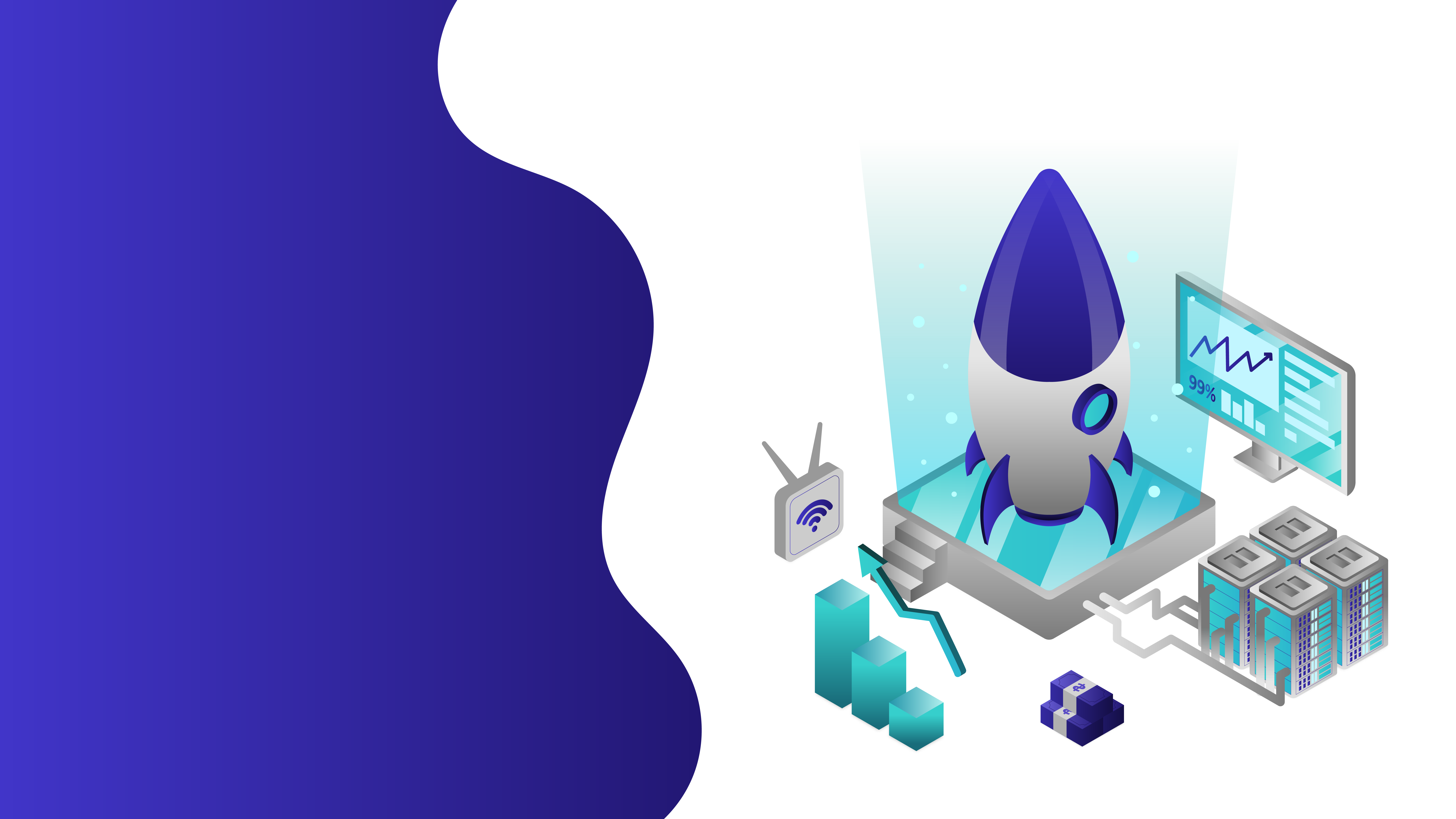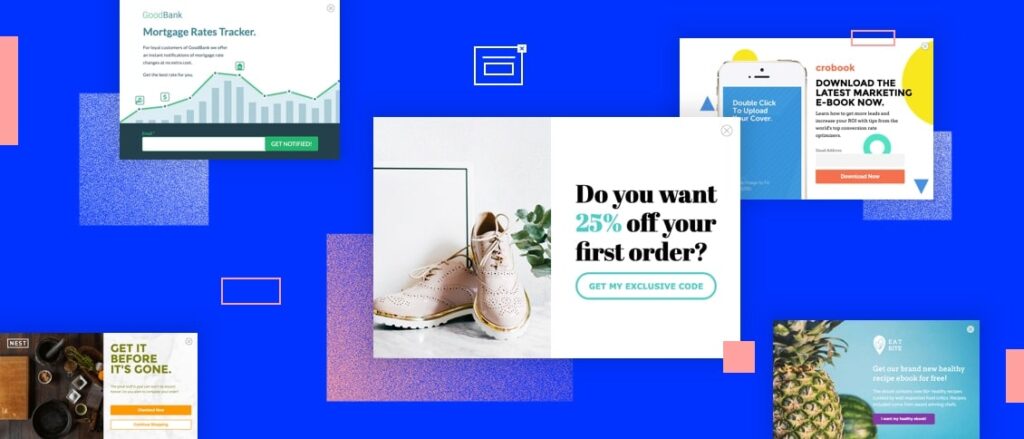
24 Feb 8 Effective Types of Pop Ups to Boost Conversions
8 Effective Types of Pop Ups to Boost Conversions
Numerous solutions help companies increase their conversion rates on their websites. Amongst these approaches lies the infamous pop ups. If you go back to the early days of the internet, the term “pop ups” may bring back memories of how enraged you were when you tried to surf the internet without being bombarded with spammy and virus-inducing windows.
Fast forward to today’s internet, and it’s a very different landscape. Businesses can now use all types of pop ups and contact popup forms to boost the likelihood of the desired action being completed on a web page while still looking good aesthetically.
Why Pop Up Marketing Works

There is a process by which the individual seeing the content decides whether or not to act, as with all conversion-focused marketing techniques. Essentially, there will always be individuals who do not complete your desired activity, no matter how good your offer is or how successfully it brings visitors to the page.
As a result, the popup can be deliberately used to raise the likelihood that someone would complete an activity, whether it is the one that was initially sought or one that has less friction.
Ultimately, website pop ups are used to optimise your overall conversion rate, whether you’re planning to boost your sales, generate more leads to your CRM database, drive more email sign-ups, increase engagement, and reduce cart abandonment.
Pop ups are somehow every marketer’s favourite as they’re easy to create. There are also tons of popup builders for free and easily integrated into your website platform.
Depending on your marketing campaign, you can choose from different types of pop ups, like lightboxes, full-screen overlays, top and bottom bars, slide-ins, gamified types of pop ups, countdown popups, video popups, and more.
In this article, get to know the nitty-gritty of website pop ups and how you can use them to your advantage.
Pop Ups Counteract the Paradox of Choice
Consider the toothpaste section at your local pharmacy. There is whitening toothpaste, natural toothpaste, cinnamon toothpaste, etc.
Customers in an online store are confronted with a comparable avalanche of choices. They appear as a slew of buttons, links, and messages pleading for visitors’ attention.
When they are unable to decide, they escape. While a little bit of choice empowers individuals, it appears that too much choice might lead to analysis paralysis.
For eCommerce, Shopify popups play the part of a friendly salesperson, tapping your client on the shoulder and asking if they can help. They focus visitors’ attention on a single, tempting offer, making the decision-making process for potential buyers easier.
Simply said, popups are adequate for the same reasons as landing pages: they remove distractions, provide a last-chance offer, and reduce the decision to a simple yes-or-no response.
Popups Re-engage Prospects by Using a Pattern Interrupt Technique
Pattern interrupt is a neuro-linguistic programming (NLP) method that salespeople have adopted for many years. The premise is relatively straightforward: do or say something unexpected to disrupt a person’s behavioural patterns.
We create moments for change by disrupting routines, so some people use the approach to break undesirable habits. Interrupting a routine with anything as fundamental as slapping an elastic band on your wrist can help.
A similar idea drives most types of popups. Unexpectedly, they present the visitor with a tempting offer, persuading them to reconsider their typical path to the ‘Back’ button.
In essence, you’re using the popup design like a rubber band to grab your visitor’s attention and then redirect it to something else, such as an unexpected sale linked to what they were looking at before.
However, you shouldn’t rely only on your popup promotions and designs. You have to be very careful in choosing how and when you’d like to show your pop ups to avoid interrupting their browsing experience. Targeting rules, intelligent triggers, and other features like exit-intent technology can help you engage with the most qualified leads at the right time.
Types of Pop Ups
1 – Gamified Pop Ups
The implementation of game design features and gaming ideas in non-game environments is known as gamification. Marketers may use gamification to make boring calls-to-action more exciting and fun so that customers will respond. Make something uninteresting, such as email forms or contact forms, engaging and interesting in this case.
Gamification is an effective strategy as people have this innate characteristic always to want to win. And gamified popup offers a whole new experience for shopping visitors.
The example below shows a spin the wheel popup wherein visitors just need to click the wheel, and it will automatically choose your winning prize. Just put your email address on the email field, and you’re good to go. You will receive your prize directly on your emails, including an exclusive coupon code, a free eBook, discount vouchers, and more.
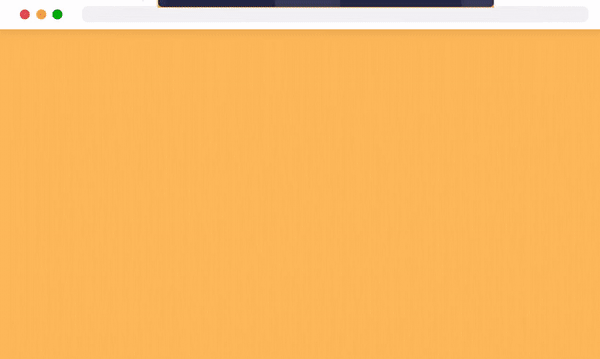
This gamification strategy will help you increase your email collection rates in only a few minutes. By gamifying your pop-ups, you can make your visitors feel they’re missing out on something if they don’t complete the task, which will motivate them to take action.
We don’t all have time to be smart with our website conversion optimisation, which is why gamified promotions, particularly spin-to-win popups, are so accessible and applicable to your marketing strategy.
2 – Exit-intent Pop ups with Coupons
Online sellers worldwide are looking for the perfect technology to help them reduce site disengagement and increase online sales by searching for the term “exit-intent popup.” Essentially, exit-intent technology is simple: it uses JavaScript to track a user’s movement on a web browser and automatically presents a coupon pop-up as a special offer to consumers who usually leave the site.
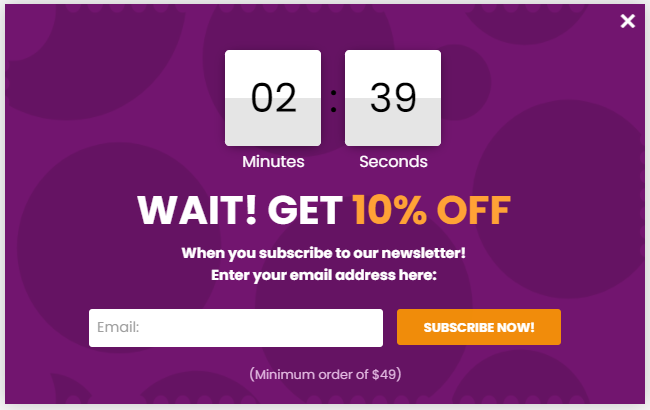
The average time spent on an eCommerce website by a customer is only 15 seconds. That isn’t nearly long enough to persuade any potential customers to make a purchase. Furthermore, 68% of customers abandon their shopping carts before checking out.
Many clients have had statistics on their web stores that are much worse than market averages. Most e-Commerce stores have a problem with this: If you don’t do anything to prevent your consumers from leaving your site with incomplete orders, no matter how well you create new traffic, you’ll eventually lose the majority of visitors, organic and paid leads.
Furthermore, its psychology is very straightforward: people require the appropriate motivation and incentives to take the desired action. When your consumers are about to leave the site, you can swiftly change their minds by incentivising them with a special “only for you” last-minute deal.
3 – Pop Ups with Eye-catching Colour Combinations
The simplest method to make your popups stand out is to choose a gorgeous colour palette.
Visitors can be stopped in their tracks by anything bright or unusual. As an example, Blissworld.com’s lightbox popup design is colourful, intense, and draws attention to its message.
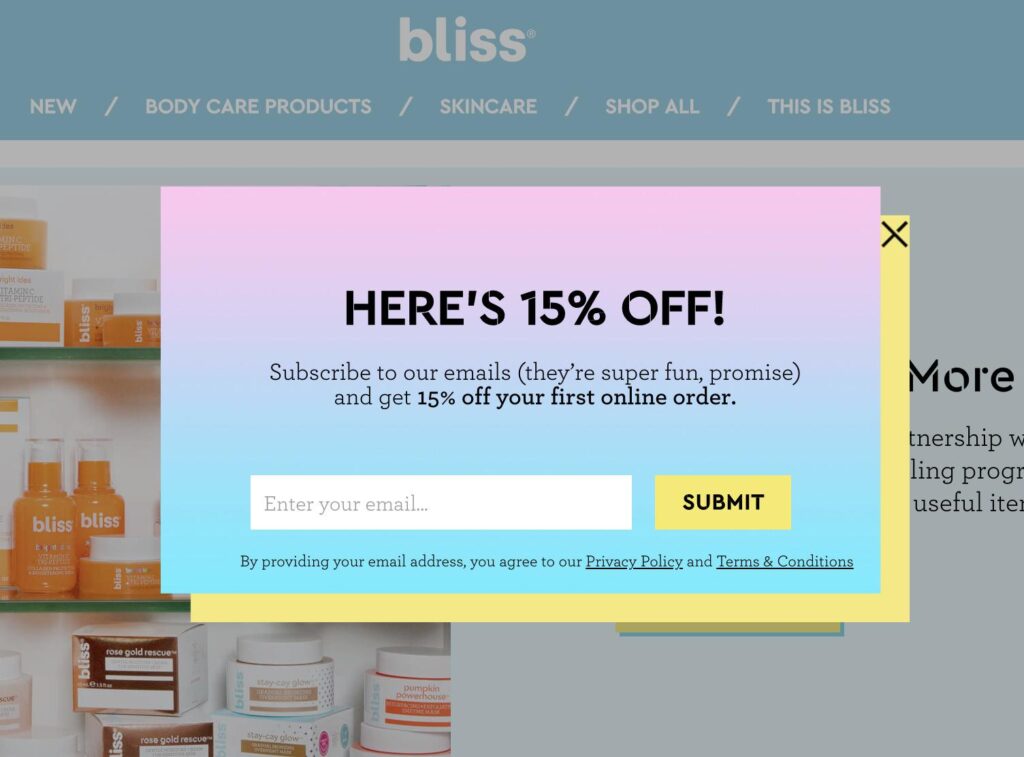
Colours in your popup don’t have to be vivid or even “loud.” A simple contrast of bright and dark might help your popups stand out. Just be careful not to go overboard with colours and get too far from your brand colour schemes. You can consider blue if you’re a learning platform as it symbolises knowledge, freedom, intuition, and intelligence.
Don’t be afraid also to mix and match colours. Suppose you’re not that confident with your colour combination. In that case, you can always conduct A/B testing wherein you will split test two different versions of your popup and see what works best for your visitors and potential customers.
4 – Limited-time Offers on Countdown Pop Ups
With a limited-time special offer, you can use urgency and scarcity to persuade individuals to commit. You might encourage your clients to act by implying that the deal will expire shortly or that supplies are limited. The advantages of utilising urgency and scarcity are self-evident.
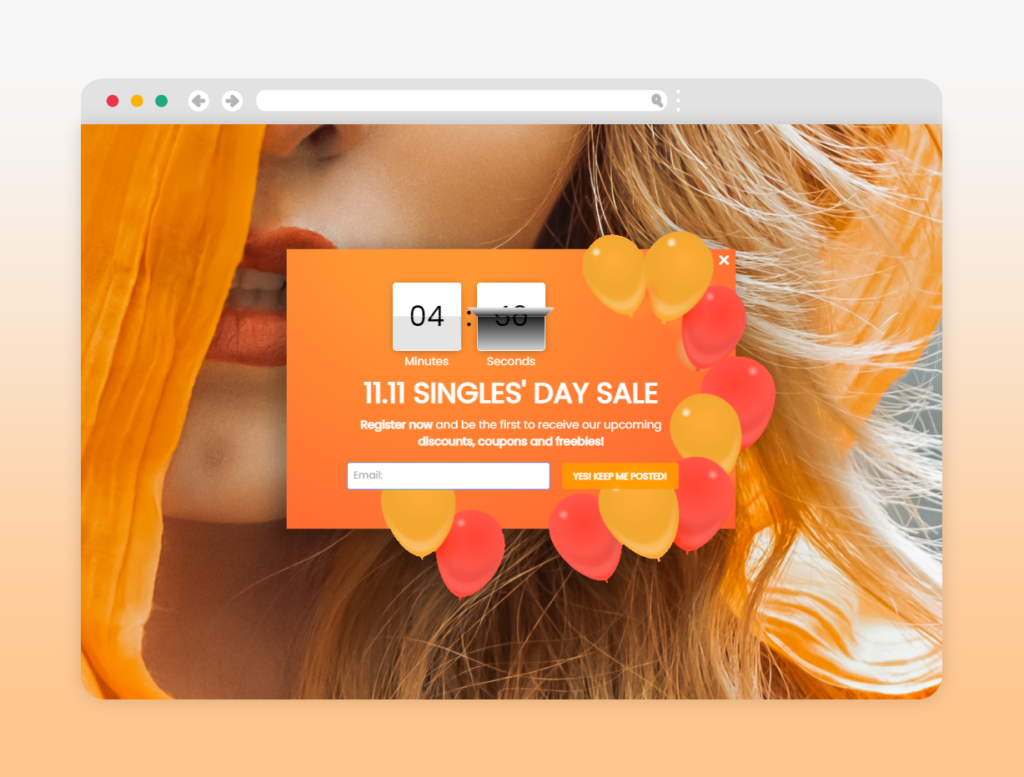
You can use urgency to create a deadline when your offer is time-sensitive. Customers may take their time before acting on your offer if there is no specified timeframe.
5 – Mobile Pop Ups
With mobile-friendly popups that convert without interfering with the user experience on your site, you can convert this mobile traffic into an opportunity. For instance, Poptin’s popup builder ensures that all templates are mobile responsive, so users do not have to undergo coding to penetrate the mobile market.
What you’ll need for successful mobile commerce is:
- Enhance mobile traffic by creating a mobile-friendly website design
- With popups that follow Google’s interstitial guidelines, you can give a better user experience while increasing your mobile conversion rate.
6 – Scroll Pop Ups
A scroll popup is a website popup that appears only after website visitors have engaged (scrolled) with your content.
In other words, visitors interested in your page will see your conversion scroll (popup). Scroll popups are more focused than entry popups, exit popups, or even timed popups because the person who is on your blog, price page, or ‘further information’ page (or anywhere your website popup campaigns are set to display) has already taken action with your site by scrolling on it.
You can make a scroll popup appear in percentage increments. 30% and 70% are two of the most popular percentages.
It’s pretty remarkable to have this freedom as a marketer. You can experiment with scroll percentages and build different campaigns depending on the viewer’s engagement with your site.
7 – Highly Targeted Pop Ups Based on Demographics and Customer Behaviour
People’s actions identify which adverts and messages will resonate with them the best. It uses behavioural data to drive targeted marketing, such as what customers do or don’t do on your website or with your campaigns. You’ll be able to connect with prospects and consumers who are most likely to buy your items, use your app, or hire your services this way.
As for businesses, this is beneficial because personalised marketing is more successful than generic ones. It is also beneficial to customers, as they will no longer be exposed to irrelevant content and promotions.
Your popup builder’s targeting features should always have an option to add specific demographics of your target market. For your popup triggers, it’s helpful that you know the best way to attract your visitors and show them your offer. If it’s too much of a hassle, you can find a best friend on the autopilot trigger. It automatically runs a series of tests based on the most common customer behaviour on your website, and it will choose the best way to engage with them.
8 – Bars and Banners
A popup banner is a banner that emerges unexpectedly in the visual interface’s forefront, usually in a demarcated window. Popup banners get their name because they “pop up” on the page, interrupting the user’s browsing experience with a promotional message.
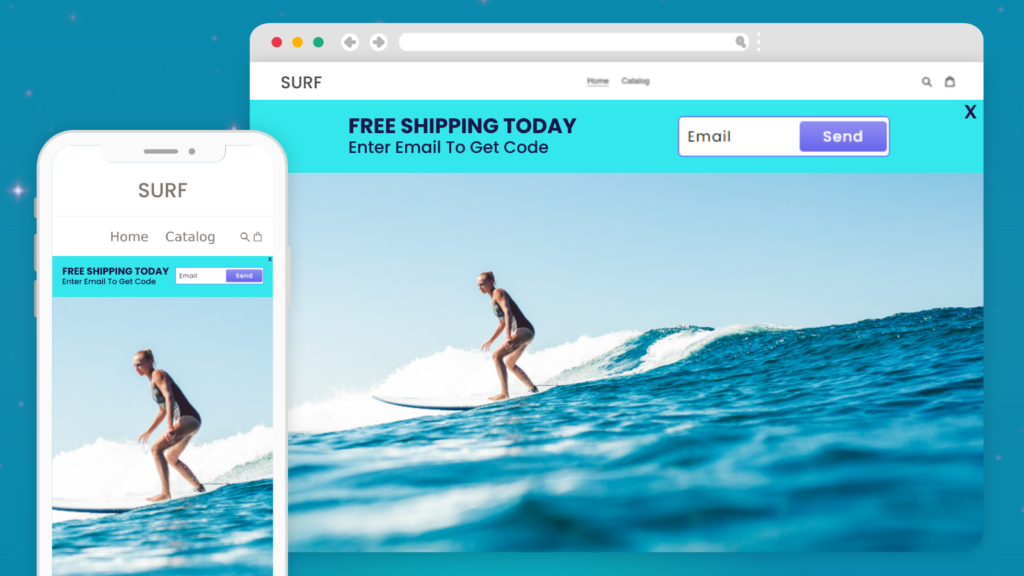
They’re typically used to offer discounts and promote new items or services. Still, they can also be used to encourage people to click on a banner for more information about a business or product. You can also use opt-in forms with popups to create a different channel for your lead generation strategy.
Conclusion
As you can see, you can use these types of pop ups and announcement bars in various non-intrusive ways. They can do a lot more than just increase sales and boost your lead generation when used correctly. You can use these tactics to educate, offer value, or just highlight the features that make your company the best choice.
However, keep in mind that you should constantly consider user experience and use A/B testing approaches to get the most out of these internet marketing strategies. Also, make sure you search for a powerful no-code popup builder that offers various customisation options for your pop ups, as well as ready-to-use templates so that you won’t create everything from scratch.
Author Bio: Abbey Claire Dela Cruz is the Marketing Manager of Poptin. Her content writer and marketer expertise revolve around devising effective conversion strategies to grow businesses. When not working, she indulges herself with nature, creating once-in-a-lifetime adventures and connecting with people of all sorts.
The post 8 Effective Types of Pop Ups to Boost Conversions is by Stuart and appeared first on Inkbot Design.


